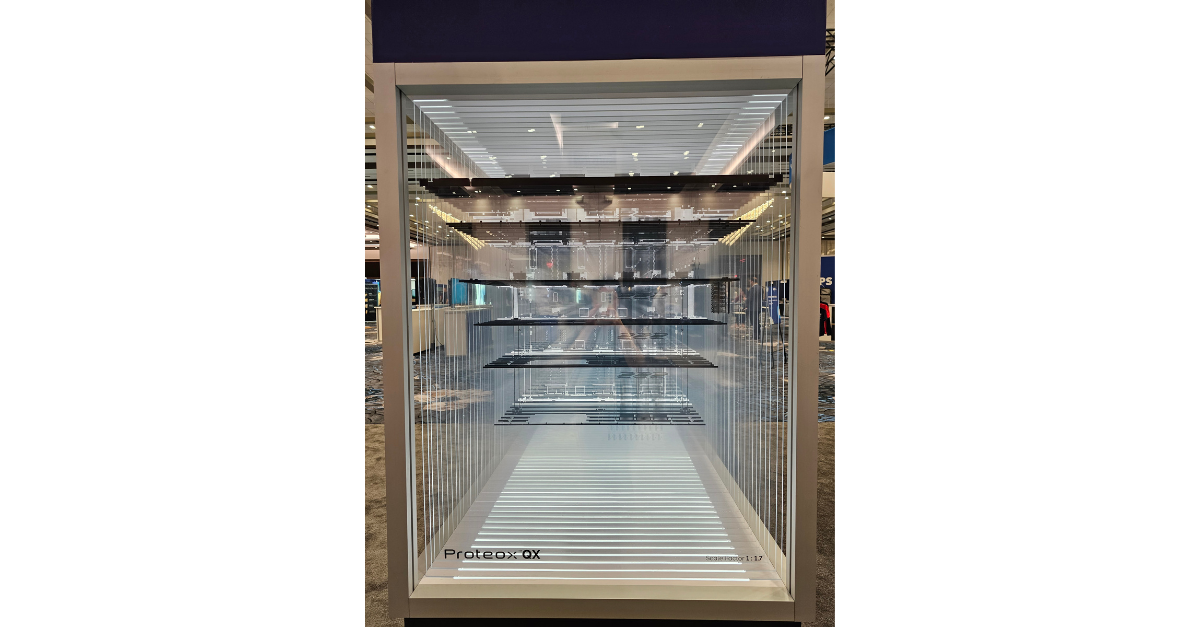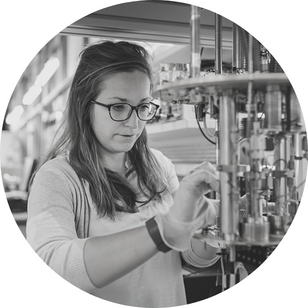Applications
 Part of the Oxford Instruments Group
Part of the Oxford Instruments Group
Expand
Collapse
Author - Harriet van der Vliet
At APS we were delighted to show the latest and largest addition to the Proteox family, the ProteoxQX. The system has been in development with customers for a few years and it was fantastic to finally reveal an artistic representation of the ProteoxQX, a 60% scale model made up of 25 sheets of etched glass, a very different visual to reflect the nature of the product.

It was really important to us to give as real a sense as possible of the actual system, so the designs etched on to the glass are the real CAD designs the build team is working against, the colour of the top of the model is the real colour of the top of the system and the access space is a proportional representation of just how much space the QX offers.
The QX was born out of many conversations about scalability and flexibility. In 2020 when we launched the Proteox we began talking about the modularity of our systems and the innovative Secondary Insert (SI) that would be able to be used across our future platforms. There is one secondary insert for the ProteoxMX, two for the ProteoxLX (our larger dilution refrigerator) and the ability to increase this for the future of the Proteox family architecture.
Side loading Secondary Inserts (SIs) can be exchanged between Proteox systems enabling experiments to be set up on a workbench prior to exchange. As the wiring can be done offline, the Proteox can be running with one SI and experimental setup inside the system with another being wired up and configured ready to be exchanged when the system is warm. This reduces the time between cool downs when changing significant wiring on the system or when changing experimental setups in a multi-user facility.
And while line of sight ports are usually limited to a maximum size of ISO100, we felt it was important to increase this space so that the user can fit in a number of components without having to disconnect the wiring every time they want to make changes.
The QX represents the future in two ways. Firstly, it has either four or six secondary inserts to deliver as-promised wiring capacity. In the QX, using a side loading secondary insert allows you to pre-characterise your wiring and to ensure the quality of a line or component, you can measure and modify offline, before cooling the system down, saving you time and maximising uptime. The ProteoxMX can even be used as a test vehicle for entire wiring modules and then moved to the QX system, ensuring reliability – a critical consideration in the operation of large systems.
Secondly, it’s a system which has scalability built into its very design fabric. With the system measuring over 3 m tall and over 1.5 m wide, when the doors are open and the radiation shields are off, the fully accessible space is huge. The square shape of the ProteoxQX means that systems can be connected very easily to give either a large continuous mixing chamber or separately controlled mixing chamber spaces. So while one system might be sufficient for now, as your QPU grows, you can connect the vacuum elements and internal structures in many different ways to meet current and future needs. It’s a system designed to grow as you do.
ProteoxQX will be an essential tool for research and development in quantum computing, allowing our customers to control more qubits than ever before. It offers more flexibility than other systems in its modular design and ability to scale easily. With our history at Oxford Instruments of delivering large cryogenic systems, we’re so excited to be part of these stories.

Harriet van der Vliet
Product Segment Manager